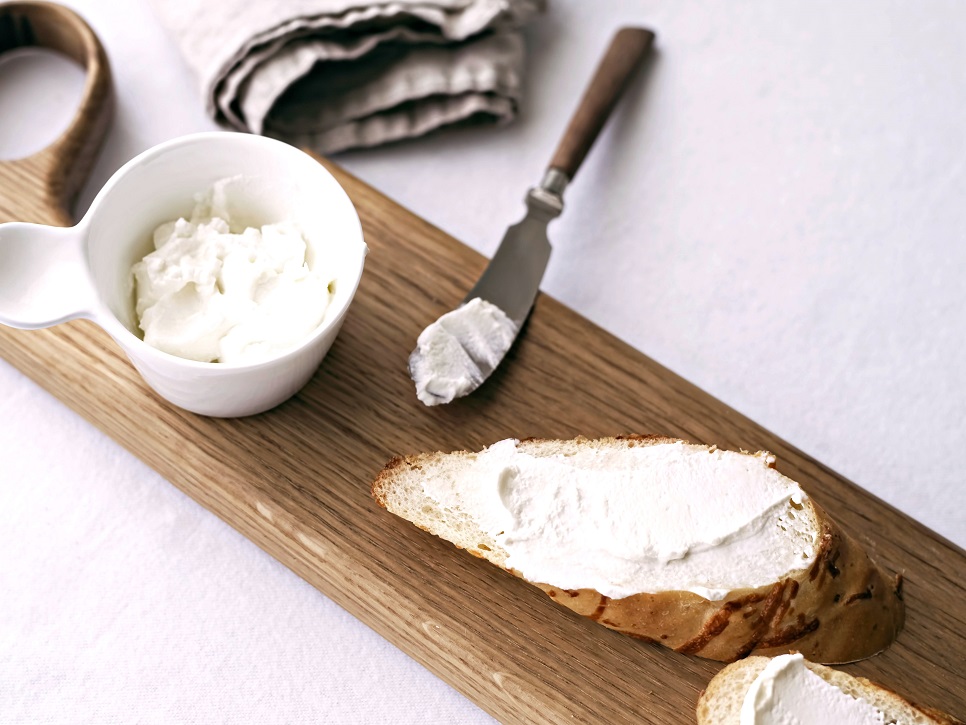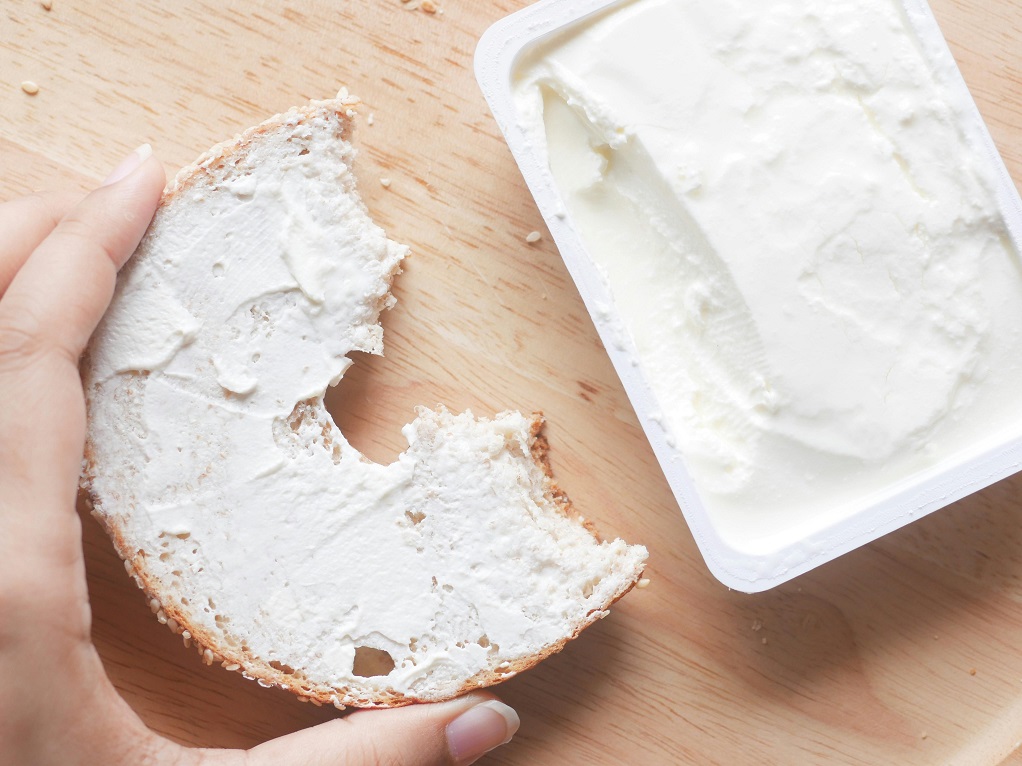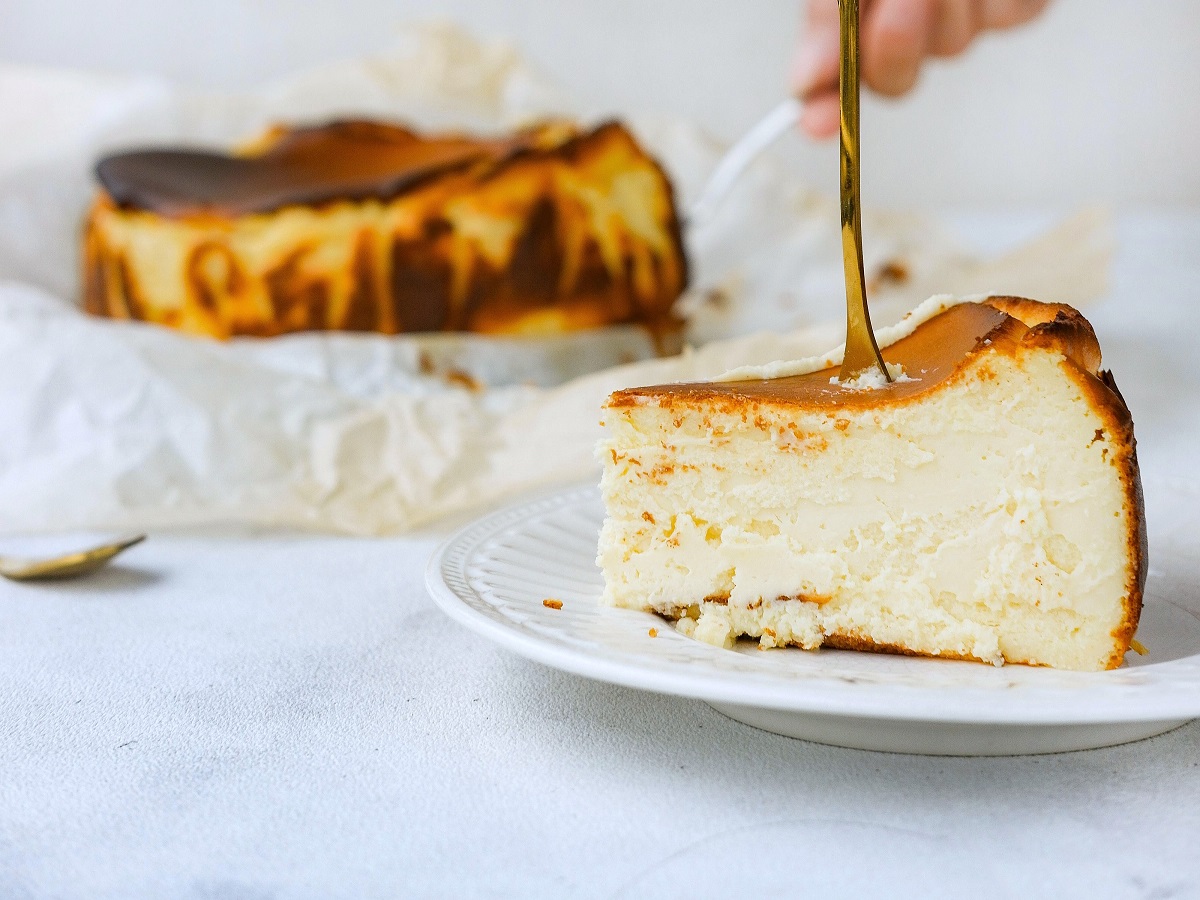Discover the key differences between cream cheese block and spread. Learn which type to use for baking, spreads, dips, and more.

When you’re walking down the dairy aisle, you might find yourself staring at the shelves, unsure about whether to pick up a block of cream cheese product or a tub of spreadable cream cheese. Both products are incredibly versatile and can be used in sweet and savory recipes alike, but there are some important differences that set them apart.
Whether you’re making a classic cream cheese frosting for your carrot cake or spreading it on your morning bagel, understanding the main differences between these two forms of cream cheese can help you achieve the perfect texture and flavor.
What Is Cream Cheese Block?
Cream cheese block is a dense, solid form of cream cheese. It is traditionally made from cow’s milk and is commonly used in both savory and sweet dishes, such as dips, cheesecakes, and frostings. The most popular brand of cream cheese block is Philadelphia Cream Cheese. It is known for its rich, creamy texture, thanks to the higher fat content and moisture levels. When you purchase a block, it typically has a firmer texture and needs to be softened to room temperature before using it in recipes like cream cheese frosting or when spreading it on crackers.

What Is Cream Cheese Spread?
Cream cheese spread is essentially a more softened, spreadable version of cream cheese block, usually sold in a tub of cream cheese. It typically contains added ingredients such as guar gum, xanthan gum, or even carob bean gum, which help make it easier to spread without the need for softening. The most common use for tubbed cream cheese spread is for spreading on bagels, toast, or crackers. It has a smoother, creamier texture than the block version, making it ideal for spreading directly from the fridge. The spread also tends to have a slightly lower fat content compared to block cream cheese and can sometimes have additional ingredients like flavoring or extra herbs.

Main Differences Between Block Cream Cheese and Spread
There is a significant difference between cream cheese block and cream cheese spread lies in their texture, moisture content, and additional ingredients. The main difference is that regular cream cheese blocks are firmer, have higher fat content, and require softening to become spreadable, while cream cheese spreads are already softened and contain extra ingredients like guar gum or xanthan gum, giving them a more spreadable consistency straight from the container. The spreadable cheese version also tends to have a slightly lower fat content than its block counterpart.
Texture and Consistency
If you’re looking for a creamier texture, the spreadable version is the best choice. It’s typically smoother and easier to apply directly onto a bagel or sandwich. The block version, however, is denser and requires softening to achieve the desired consistency. For frosting or recipes where the consistency of the cream cheese is key, block cream cheese is often the better choice, as its firmer texture creates a thicker final product.
Flavor Differences
Both cream cheese block and cream cheese spread are made with similar ingredients, but there can be slight flavor variations due to the added gums in the spreadable cheese. While both have that signature tangy flavor typical of cream cheese, the added ingredients in cream cheese spreads may make them taste slightly different, often a bit milder compared to the block version.
The Role of Fat Content
The higher fat content in block cream cheese contributes to its richer flavor and denser consistency. The spread version, however, tends to have a lower fat content due to the addition of water and emulsifiers, which results in a more spreadable cream cheese with a lighter texture. This can be helpful when you’re making recipes where a rich, dense cream cheese might overwhelm the other flavors.

What are the Uses for Cream Cheese Block?
Baking and Cooking
One of the most common uses for cream cheese block is in baking and cooking. The firmer texture and higher fat content of cream cheese blocks make them perfect for recipes where a thicker consistency is required. For instance, block cream cheese is the preferred choice for:
- Cheesecakes: The block form provides the thick, creamy consistency that’s essential for the rich texture of a cheesecake. It doesn’t liquefy as much as the spreadable version, helping create a smooth, dense filling.
- Frosting: If you’re making cream cheese frosting for cakes like carrot cake or red velvet cake, the block cream cheese is the better option. Its firmness helps the frosting hold its shape and provides a richer, more stable consistency.
- Dips: For thicker dips such as a spinach dip or jalapeño popper dip, the block version works best because it doesn’t have the added moisture of the spreadable type. You can also whip it to make a creamy dip, which holds up well against added ingredients like cheese or herbs.
- Stuffed Pastries: For pastries such as cheese danishes or cream cheese-filled croissants, the block form is easy to cut into small cubes or softened slightly to be used as a filling, ensuring that it doesn’t lose its shape in the baking process.
Savory Dishes
Block cream cheese can be used in a variety of savory dishes as well. Since it has a denser texture, it helps balance out the richness of creamy sauces or soups. You might use it in:
- Creamy sauces: When you’re making a creamy sauce for pasta or as a topping for baked potatoes, block cream cheese can be melted into the sauce to create a smooth, thick consistency without making it too runny.
- Savory dips: Whether you’re mixing it into a savory onion dip or blending it with garlic and herbs for a quick spread, block cream cheese helps hold the texture together and doesn’t turn soupy, providing stability in dips.
Homemade Cream Cheese
If you want to make homemade flavored cream cheese from scratch, using a block form gives you the starting point needed to create the rich, soft cheese from scratch.

What Are the Uses for Cream Cheese Spread?
Spreads for Snacks
Cream cheese spread is designed to be ready-to-use straight from the container, which makes it a go-to for quick and easy snacks. Because of its smooth and spreadable consistency, it’s perfect for:
- Bagels: A classic use for cream cheese spread is on your morning bagel. It’s soft and spreadable straight out of the fridge, making it ideal for breakfast table spread or snacks.
- Crackers and Toast: Simply spread cream cheese onto crackers or toast for a quick, satisfying snack. You can also add fresh herbs, salt, and pepper to elevate the flavor.
- Sandwiches: When making sandwiches, cream cheese spread can be used as a creamy base to hold together other ingredients like cucumbers, smoked salmon, or even meats like turkey.
Dips and Sauces
Cream cheese spread is excellent for making quick dips and sauces, thanks to its smooth consistency. Use it in:
- Simple dips: Combine cream cheese spread with other ingredients like salsa, shredded cheese, or herbs for easy dips. You won’t have to worry about softening it beforehand, making the preparation process much faster.
- Creamy sauces: Add a dollop of cream cheese spread to pasta sauces or soups for a rich tasting creamy texture. Since it’s already soft, it dissolves quickly and blends well into liquids.
Frosting and Sweet Treats
Store-bought cream cheese block is typically the go-to for cream cheese frosting, cream cheese spread can also be used for lighter versions of frosting. It’s perfect for:
- Lighter frosting: If you want a softer, less rich frosting for cupcakes or cakes, cream cheese spread is ideal. It’s easier to work with because it’s already soft, and you can add powdered sugar and vanilla for a simple yet delicious frosting.
- Sweet dips: Mix cream cheese spread with ingredients like chocolate chips, marshmallows, or fruit to make an easy sweet dip for fruits like apples, pears, or strawberries. You can also use it as a base for fruit salad dressings.
Easy Meal Prep
Cream cheese spread is a time-saving option for meal prep because it’s ready to use with no extra steps involved. Whether you’re assembling sandwiches or packing lunches, you can use the spread as an easy filler, complementing meats, vegetables, and other ingredients.

Can You Substitute Cream Cheese Spread for Block?
If you’re in a pinch and only have cream cheese spread available, it is possible to use it in place of block cream cheese, though you may need to adjust for the added moisture. For recipes requiring a thicker texture, such as cheesecake or frosting, you might need to use less spreadable cheese to compensate for the higher moisture content and lower fat. For savory dips or bagels, it’s an easy swap, as the spreadable version is usually the preferred choice.
Storage and Shelf Life of Cream Cheese Block and Cream Cheese Spread
Both cream cheese block and spread are perishable items that need to be stored in the refrigerator and have relatively short shelf life. The shelf life of cream cheese is typically around 1-2 weeks past the “best by” date, though they can last longer if unopened. Once opened, both should be stored in an airtight container and used within a week to ensure the best fresh flavor. If you find that you can’t use it up in time, you can freeze it, but it might alter the texture slightly.

Which One Should You Use: Cream Cheese Block or Cream Cheese Spread?
Ultimately, the choice between cream cheese block and cream cheese spread boils down to your intended use. If you’re making recipes that require a firmer texture, such as cheesecake, cream cheese frosting, or thick dips, the block form is the way to go. On the other hand, if you’re looking for a quick and easy spreadable cream cheese for your bagels, crackers, or dips, the spreadable version is the more convenient option.
Both have their place in the kitchen, depending on the flavor and texture you’re aiming for in your dishes. With both types, you’re bound to enjoy the smooth, creamy richness of cream cheese that makes so many dishes truly delicious!















